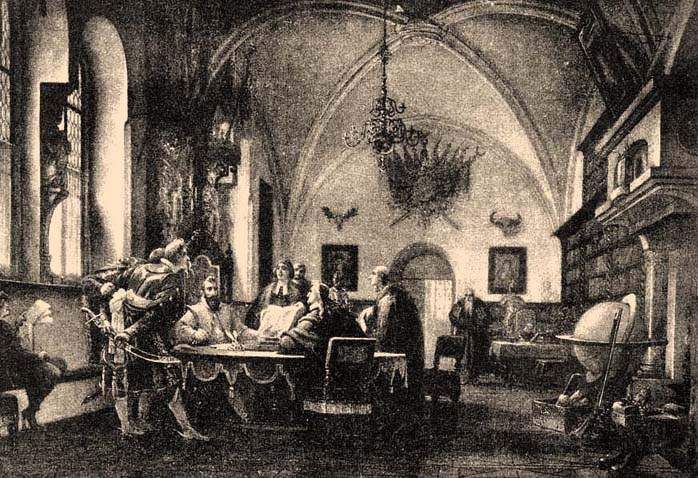The faces we pay with: discover the world of Hungarian banknotes – PART I
They are the historical faces that we interact with most often. We are so accustomed to seeing them as pieces of currency that we seldom stop and actually look at them. Still, they are representing some of our most important historical legacies. This article, the first in a series of two, will tell you about the portraits and landmarks on three Hungarian banknotes, so that the next time you pay for your coffee, you will appreciate that guy with the weird hat better.
The current series of banknotes has been in usage since 1997, and as of now, it consists of six denominations. Although the National Bank redesigned its colour scheme in 2014, the illustrations remained unchanged.
500

Photo: Wikimedia Commons / Timur lenk
The 500 Ft note depicts on its obverse side Francis II Rákóczi (II. Rákóczi Ferenc), a Hungarian nobleman from the 17th century who led the Hungarian uprising against the Habsburgs in the 1703-1711 war of independence as the prince of Transylvania. The revolution failed, but today he is hailed as a national hero.

Photo: Wikimedia Commons / Timur lenk
On the reverse of the note, we can see the castle of Sárospatak, also known as Rákóczi’s Castle, the most important piece of late Renaissance architecture, located in northeastern Hungary.

The castle of Sárospatak today. Photo: Wikimedia Commons / Civertan Grafik
1000

Photo: Wikimedia Commons / Timur lenk
The 1000 Ft note figures Matthias Corvinus (Hunyadi Mátyás), a Hungarian king from the 15th century. He is probably the most popular king in the Hungarian public imaginary, often called Matthias the Just, protagonist of countless folk tales in which he roams the country in disguise and delivers justice to his subjects. He is also known for importing the Italian Renaissance tradition into his court, marrying Beatrice of Naples.

Photo: Wikimedia Commons / Timur lenk
On the reverse of the note, we can see the Hercules Fountain which is found in the Royal Palace of Visegrád, the second residence of several kings during the period, including Matthias, too. Even more famous is the scenic Castle of Visegrád, remaining a popular tourist destination today. But both sights survived only in a reconstructed form, as they were destroyed during the Turkish invasion.

The Hercules Fountain in the Royal Palace of Visegrád. Photo: Wikimedia Commons / Mediatus
2000

Photo: Wikimedia Commons / Timur lenk
On the 2000 Ft note, we have Gabriel Bethlen (Bethlen Gábor), prince of Transylvania as well as king of Hungary from the 17th century, who is known for consolidating the economic and cultural life of Transylvania, and his reign is associated with the region’s golden age.

Photo: Wikimedia Commons / Timur lenk
He urged the development of intellectual life, founding a college in Gyulafehérvár and supporting students who wished to study abroad. This is represented by the painting on the reverse side of the note in which he is seen surrounded by his scientists. This is a piece by Viktor Madarász, one of the most important Romantic painters who immortalised many other moments of Hungarian history.

Viktor Madarász, “Bethlen Gábor amongst his scientists”. Photo: Arcanum Adatbázis Kft. / OSZK MEK
The one that got away

Photo: Wikimedia Commons / Timur lenk

Photo: Wikimedia Commons / Timur lenk
If you live in Hungary, you may remember the green 200 Ft notes that were discontinued in 2009 and replaced by coins. We had to say goodbye to the face of Charles I, king of Hungary in the 13th century, and the castle of Diósgyőr, now part of Miskolc. Some of us were glad to stop using these notes that were in a state of severe disrepair, but our wallets definitely got heavier – fortunately, 1 and 2 Ft coins had been taken out of circulation one year before in 2008!
Featured image: Wikimedia Commons / Takkk
please make a donation here
Hot news
Minister: Hungary will protect its territory by every means possible
Orbán cabinet may double airspace fee: another ticket price increase?
Hungary expanding the list of prohibited designer drugs
Hungarian minister: Ukraine ‘blackmailing’ Hungary and pro-peace states
Cocaine found on a Greek bus at southern border of Hungary
NCIS star arrived in Budapest: spin-off filming started




